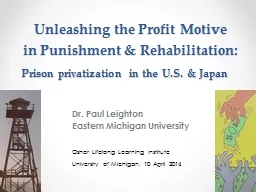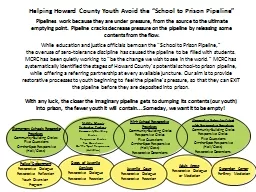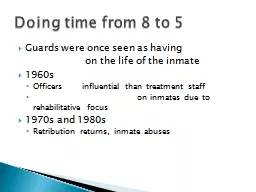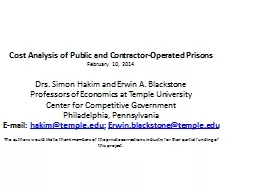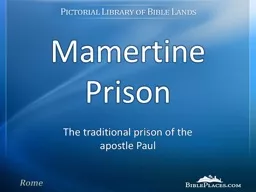PPT-Prison Officers at their Best
Author : tawny-fly | Published Date : 2018-02-19
Professor Alison Liebling Institute of Criminology Cambridge Prison Officer Summer Symposium Oxford August 1415 2017 The story begins Oiling the wheels of a research
Presentation Embed Code
Download Presentation
Download Presentation The PPT/PDF document "Prison Officers at their Best" is the property of its rightful owner. Permission is granted to download and print the materials on this website for personal, non-commercial use only, and to display it on your personal computer provided you do not modify the materials and that you retain all copyright notices contained in the materials. By downloading content from our website, you accept the terms of this agreement.
Prison Officers at their Best: Transcript
Download Rules Of Document
"Prison Officers at their Best"The content belongs to its owner. You may download and print it for personal use, without modification, and keep all copyright notices. By downloading, you agree to these terms.
Related Documents


